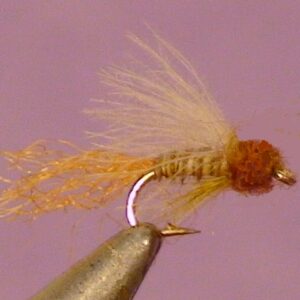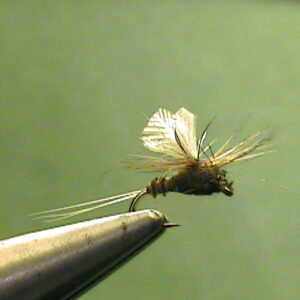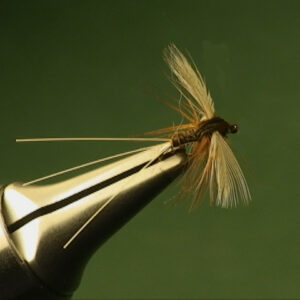Hook Size: 18
The nymphs are crawlers that always stay near the current but on the bottom
down in the rocks, gravel and other bottom structure. They prefer freestone
streams with fast to moderate currents. The nymphs are a yellowish, brown color
and are a hook size 18. These look more like swimming nymphs than crawlers in
terms of their shape. They are very slim but they do not swim.
Nymph Presentation:
Prior to hatch times, concentrate on fishing the calmer areas of water that are
near riffles and runs such as calm pockets, eddies, and calm areas near the
banks. The nymphs will move to this type of water to hatch. At times you may
see them hatching in water so shallow you wouldn’t think anything would live
there. Trout will often swim into this shallow water and make a run at the nymphs.
Catching trout feeding on the blue quill nymphs in this calm to moderate water is
not easy. You will spook a lot of fish. One reason it that when you cast into a
calm pocket and try to get the natural slower drift, the fast water will grab your
line and jerk the nymph out of the calm water like an Iran speedboat. This is why
you need to try to keep as much line out of the water possible. This is almost
impossible to do in the slow moving shallow water where they hatch. Try to move
up to these areas staying hidden behind rocks and boulders. Stay back away
from the banks and cast in the calm pockets along the banks.
Another problem we mentioned above is that the trout won’t hold in the very
shallow water. They tend to run in and grab a nymph and then retreat to their
holding water. Not all of them hatch in shallow water. Prior to the time they hatch
they may hatch just about anywhere there is not fast, turbulent water.
If the hatch hasn’t started, you will want to use a weighted imitation of the nymph
or weight your leader just enough to get the fly down near the bottom. These
mayflies hatch in water very similar to the Blue-winged Olives except usually
shallower. In the shallow, calmer water, a strike indicator such as a fairly visible
dry fly will work to keep track of the little nymph imitations; however, you are
much better off just watching your line for a strike.
Fish imitations of the nymph when it is time for a hatch when the water ranges
from 45 to 48 degrees. Once the hatch starts, you will want to change to an
emerger or dun imitation.
Copyright 2003 James Marsh




